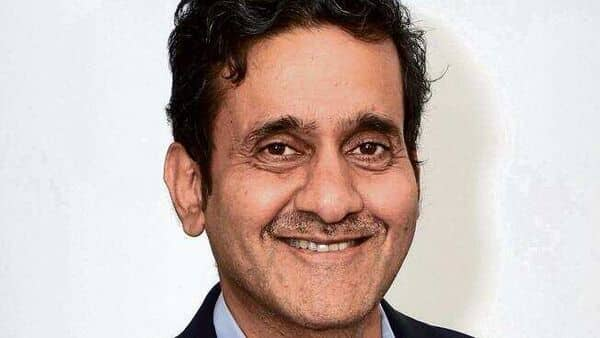[ad_1]
Nirmal Jain, Founder of IIFL Group
IIFL Finance Ltd recently raised ₹2,200 crore from the Abu Dhabi Investment Authority (ADIA) for its housing finance business. The NBFC business of Mumbai-based IIFL group is confident of a compound annual growth rate (CAGR) of 25% in the coming years as it targets housing finance, gold loans and partnerships with fintechs and neo-banks, said Nirmal Jain, founder of IIFL Group and managing director of IIFL Finance. Edited excerpts from an interview.
You have outlined a plan to grow your company’s bottom line to ₹2,500 crore by FY25. How do you plan to achieve this in an environment where interest rates have gone up significantly?
In this fiscal, we have been growing our loan book at a CAGR of 25% p.a. Quarter-on-quarter, this may fluctuate a bit, but we are confident of averaging 25% CAGR in our loan book over the next three years too. The retail credit market will grow at 15-18% per annum over the next three years, and IIFL Finance can grow a little faster. This is because we have enhanced our branch network and manpower strength by over 40% over the last 18 months. Our nationwide phygital network and best-in-class digital capabilities will help improve efficiency and productivity.
As far as the profit target is concerned, we have been able to pass on higher interest rates in most of our loan products. Our customers across segments, be it gold loans, small business loans or affordable home loans, are less sensitive to interest rate hikes within a narrow band of 1-2%.
With the slowdown in the pace of branch expansion, we will start achieving economies of scale, which will help in bringing down the cost-to-income ratio. Historically, our cost-to-income ratio hovered around 35% but has shot up to 43% post-recent expansion. I believe we will be able to bring it back to those levels in the next 2-3 years. With loan asset CAGR of 25% and scale economies, our target of ₹2,500 crore profit by 2025 should be achievable.
How significant is the home loan portfolio in your FY25 targets?
It’s the most significant part of our strategy and is likely to contribute almost 50% of our targeted net profit by FY25. ADIA equity capital has strengthened our balance sheet, which has boosted our credibility with lenders and will help us in getting a rating upgrade. Our focus market segment of home loans, around ₹15 lakh, is growing rapidly and is relatively less competitive. New players are focusing on sub- ₹10 lakh loans, and established banks and older housing finance firms are focusing on the significantly higher value of loans. The sweet spot we operate in targets people with an annual income of ₹ 6-8 lakh and houses of ₹20– 25 lakh.
Are rising interest rates causing a fall in demand in loans?
The demand for home loans depends on three factors—interest rates, income levels and house prices. While the interest rate is moving unfavourably for housing loan demand, the other two factors are positive. People have seen a significant increase in income levels with economic growth and businesses bouncing back to pre-covid levels. Further, housing prices in nominal terms have grown much slower than income levels for 20 years. Builders are getting regulated by Real Estate Regulatory Authority and are not getting funded if they hold projects for long. Therefore, they have kept prices in check and are offering discounts to move inventory. As a combined effect of all these factors, we expect strong demand for housing.
What has been the impact of covid-related stress on your loan portfolio?
There was some covid-related stress in our construction and real estate, microfinance and business loan portfolios. IIFL’s corporate book has been on a decline as we are not providing incremental new loans. Microfinance and business loans have also recovered. During covid, we took a significant hit to the bottom line and made adequate provisions for covid-related stress. The rising interest-rate scenario is not of concern.
Are you looking to exit your corporate book, given your focus on retail?
We do not have to make any extra effort to exit the corporate loan book because it will run its course in the next 2-3 years. However, we will continue to fund construction through our housing finance company, particularly for green housing projects, where we have an advantage as a preferred lender for home loans to end-user. These loans are of smaller-ticket size and carry less risk. We have not done any promoter funding, so our corporate book is likely to remain under 5% of the total book.
How important is the gold loan segment?
In the recent past, the gold loan has seen intense competition as many new NBFCs, fintechs, and small banks are offering loans at rates which are loss-making, either due to inexperience or as an aggressive customer acquisition strategy. However, given our goodwill and trust with customers, we do not resort to short-term teasers. We never compromise on our values. Many new competitors are misled to believe that gold loan is a low-risk and high-margin business. But they do not realize that there is a significant operating cost involved…with the responsibility to keep gold under safe custody. Operating cost tends to be 6-8% of loan assets. Therefore, despite seemingly high net interest margin, you do not make a very high return on assets.
Download The Mint News App to get Daily Market Updates & Live Business News.
[ad_2]
Source link
John Miller has been writing about science, gaming, and tech culture for over a decade. He’s a top-rated reviewer with extensive experience helping people find the best deals on tech and more.



